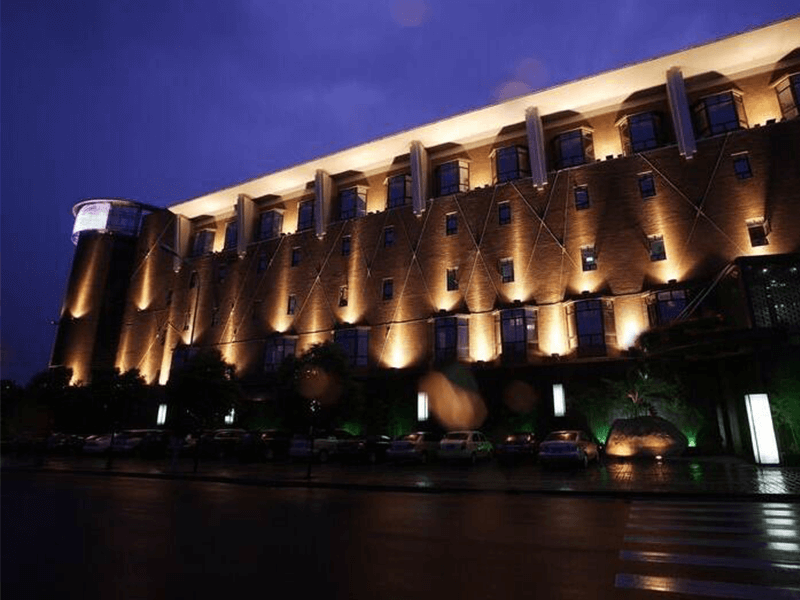1. What is low-voltage landscape lighting?
– Low voltage landscape lighting refers to outdoor lighting systems that operate at voltages typically ranging from 12 to 24 volts, as opposed to traditional high voltage systems that operate at 120 volts or higher. These systems use lower voltage levels for safety and energy efficiency.
2. How does low-voltage landscape lighting work?
– Low-voltage landscape lighting works by connecting lighting fixtures to a low-voltage transformer, which reduces the standard household voltage (120V) to a safer and more energy-efficient voltage (typically 12 or 24 volts). The transformer converts the voltage from the primary power source to supply electricity to the lighting fixtures across the landscape.
3. What are the benefits of using low-voltage landscape lighting?
– Low voltage landscape lighting offers a range of advantages, including heightened safety, decreased energy usage, versatile design, and installation options, extended fixture longevity, and the capacity to produce diverse lighting effects such as accentuating architectural elements, pathways, and landscaping features.
4. How does low-voltage landscape lighting compare to traditional high-voltage lighting?
– Low-voltage landscape lighting is safer, more energy-efficient, and easier to install than traditional high-voltage lighting. It also allows for greater flexibility in design and offers a broader range of lighting options and effects.
5. What types of fixtures are available for low-voltage landscape lighting?
– Common fixtures for low voltage landscape lighting include path, spot, flood, well, deck, step, and accent lights. Each type of fixture is designed for specific applications and lighting effects.
6. What components are needed for a low-voltage landscape lighting system?
– The main components of a low-voltage landscape lighting system include lighting fixtures, a low-voltage transformer, electrical cables or wiring, connectors, and possibly a timer or lighting control system.
7. Can I install low-voltage landscape lighting, or do I need to hire a professional?
– While some homeowners may choose to install low-voltage landscape lighting themselves, hiring a professional installer is often recommended, especially for larger or more complex systems. Professional installers have the knowledge and experience to ensure proper installation and safety.
8. Are low-voltage landscape lighting systems safe?
– Low voltage landscape lighting systems are generally considered safe for outdoor use. Operating at lower voltage levels reduces the risk of electric shock and makes the system safer to install and maintain.
9. How do I design a layout for my low-voltage landscape lighting system?
– Designing a low-voltage landscape lighting system layout involves assessing the outdoor space, identifying key illuminating features, selecting appropriate fixtures and locations, and considering aesthetics, functionality, and safety factors.
10. What considerations should be considered when selecting fixtures for low-voltage landscape lighting?
– Factors to consider when choosing fixtures include the desired lighting effects, the size and layout of the outdoor space, the type of landscaping features to illuminate, fixture material and durability, and energy efficiency.
11. How do I choose the transformer for my low-voltage landscape lighting system?
– When choosing a transformer for a low-voltage landscape lighting system, consider factors such as wattage capacity, voltage output, compatibility with the lighting fixtures, durability, and ease of installation.
12. Can low-voltage landscape lighting be used in all weather conditions?
– While low-voltage landscape lighting fixtures are engineered to endure diverse weather conditions such as rain, snow, and extreme temperatures, it is imperative to undertake proper installation and maintenance practices to guarantee their longevity and optimal performance.
13. Are there energy-efficient options available for low-voltage landscape lighting?
– Numerous low-voltage landscape lighting fixtures utilize energy-efficient LED technology, which consumes less power and boasts a longer lifespan compared to conventional lighting sources like incandescent or halogen bulbs.
14. How do I maintain my low-voltage landscape lighting system?
– Regular maintenance tasks for a low-voltage landscape lighting system include cleaning fixtures and lenses, checking connections and wiring for damage, replacing bulbs or fixtures as needed, and adjusting lighting schedules or settings as the seasons change.
15. How Far Can Low Voltage Landscape Lighting Wire Extend?
– Low-voltage landscape lighting wire can typically extend up to approximately 100 feet when using 12-gauge wire runs without encountering significant voltage drop issues. However, it’s crucial to ensure that the total wattage of the connected light fixtures remains below 100 Watts or equivalent.
16. What is the Maximum Number of Lights for a Low-voltage Transformer?
– The maximum number of lights connected to a low-voltage transformer depends on the transformer’s wattage capacity and the wattage of each LED light fixture. For instance, if the transformer has a capacity of 200 Watts, you could connect 200 LEDs with a power rating of 1 watts each or 4 LEDs with a power rating of 50 Watts each. However, ensuring that the total wattage does not exceed 90% of the transformer’s capacity is advisable to account for power loss in the transmission wire.
17. Is it recommended that Halogen and LED Landscape Lights be mixed?
– Mixing halogen and LED landscape lights is generally not recommended due to differences in wattage and voltage requirements. Combining these lights without adjusting the voltage ratio appropriately may lead to compatibility issues and potential damage to the landscape lighting system over time. However, a qualified electrician may be able to adjust the voltage ratio and wattage to ensure compatibility and prevent any adverse effects on the system.
